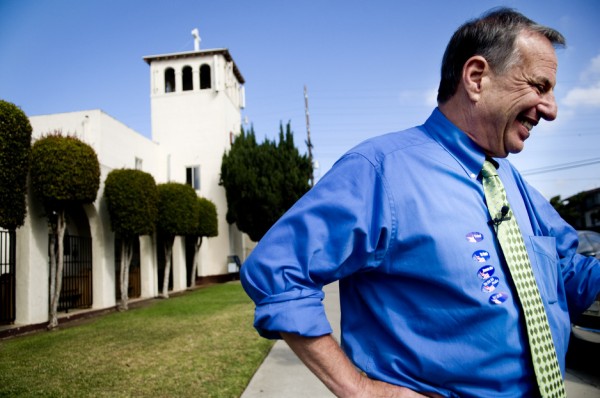The Bob Filner Education Plan: Partnerships and Coordination


The way in which San Diego handles its youth and education is not perfect. That is the reason why youth development is a key issue in San Diego's mayoral election. Education is not confined to a classroom, and that philosophy dictates the Bob Filner education plan.
Mayoral candidate and current Congressman Bob Filner published an 8-point document to revamp San Diego's youth development. It calls for a collaborative approach to the city's education system.
His first point is to establish an institution that binds the city, county, and public schools together. The three elements of San Diego specialize in different services. The city focuses on safety and infrastructure, the county focuses on social services, and public schools run the classroom.
In order to get these actors to work together, the binding institution would be called "Pathways." It would be an office directed by the Mayoral position that creates a centralization of San Diego's opportunities. It's more than a job bank in that it acts as a support center. With the increased coordination, Rep. Filner hopes to create an efficient network to identify community needs. The office would have to develop courses of action that are in sync with received funding.
Pathways would also establish community leadership through the Youth Development Authority, which aims to promote recreation, internships, and job training. The first point in the plan sets several goals, but further points expand on how to attain the goals. With an emphasis on youth development and work experience, the "Hire-A-Youth" program would be revitalized by Filner, stating in the second point:
"In order to be successful citywide there must be a broad partnership between schools, workforce providers, and local agencies."
The idea is to link non-profit organizations, private companies, job training programs, school districts, and community colleges to the local government. That is the broad vision of the Pathways office, a center for opportunities in San Diego. Mayoral candidate Bob Filner believes this network would also close gaps in terms of communication and information sharing for the institutions.
The Filner education plan points out specific institutions that would participate in the coordination effort:
"Filner will bring youth to the table with public agencies (city, county, Workforce Partnerships, JobCorps), public safety (SDPD, County Sheriff), private organizations (including [San Diego] Chargers, Qualcomm), non-profits (including arts organizations, churches, museums), service providers, volunteer groups (senior centers, Neighborhood Watch) and advocates (San Diego Organizing Project) to form a youth development office."
The plan also attempts to provide free bus and trolley passes to students, which are currently $36 a month. This is expected to increase public school attendance rates. Filner also wants to increase funding for parks, recreation centers, and swimming pools to keep the facilities open for longer hours. The plan mentions increased funds for libraries as well, including plans, "to reinstate the 2000 Library Ordinance which aimed to eventually set aside 6% of the General Fund budget for libraries."
Congressman Bob Filner's opponent Councilman Carl DeMaio has not yet released a plan for education. However, DeMaio is holding a joint session for the City Council and public on Sep. 18th at 6pm. Councilman DeMaio wants to hear from the community of San Diego about what it wants to see done for the city's education. The president of the San Diego City Council, Tony Young, backed the Bob Filner education plan. Young also supports DeMaio's joint session and is seen as a supporter of non-partisan solutions by, "trying to push the issues."
The two candidates do agree on at least one detail for education and youth development, the importance of on-the-job experience and internships. IVN reported on the Sep. 7th mayoral debate in La Jolla and we saw both candidates emphasize youth job training.



